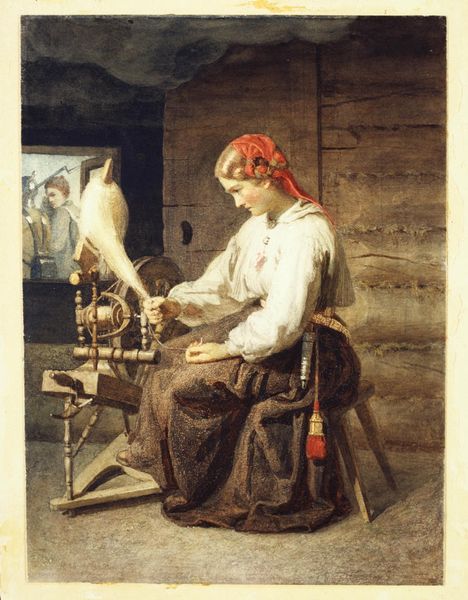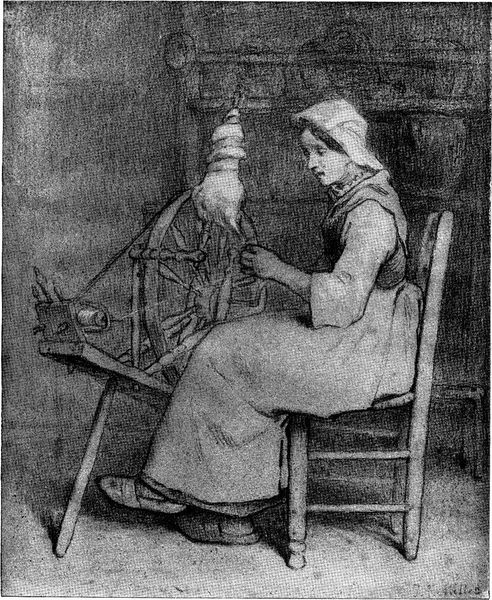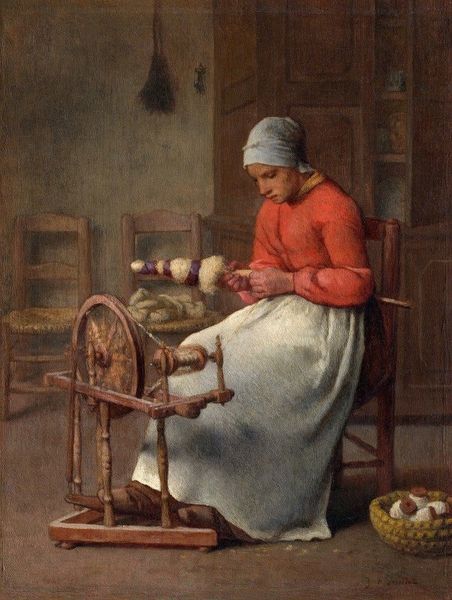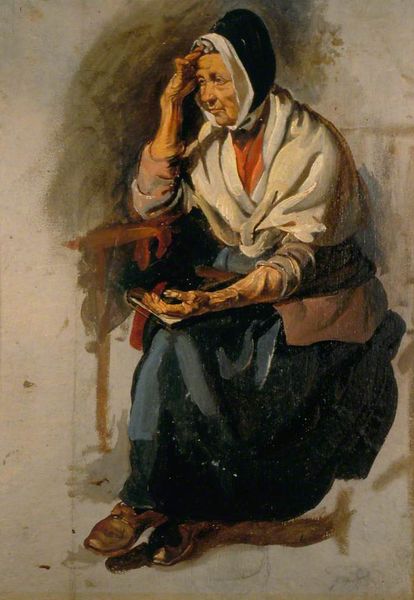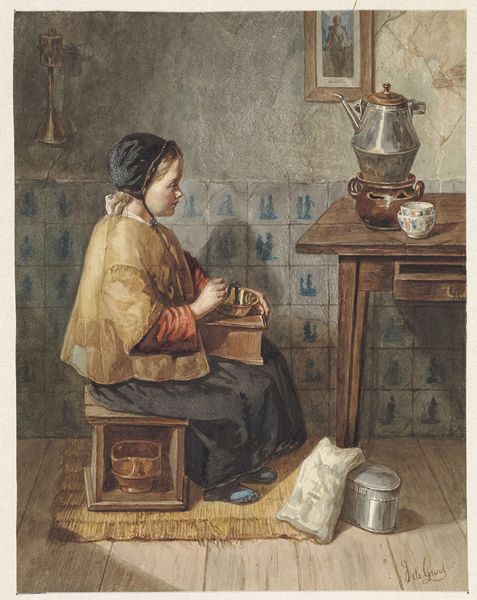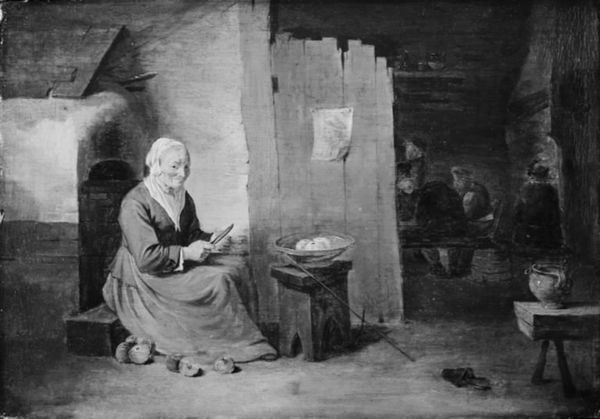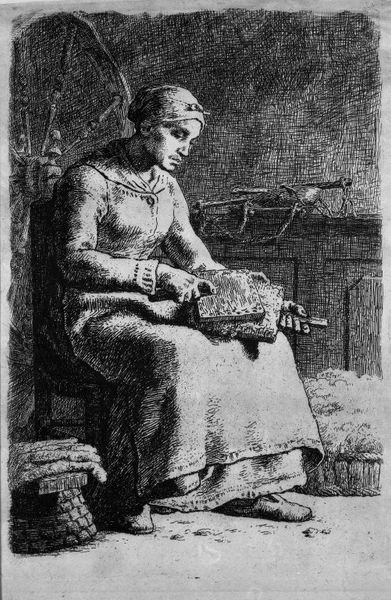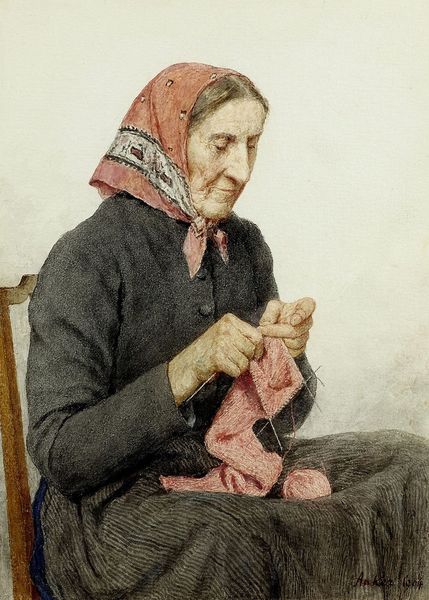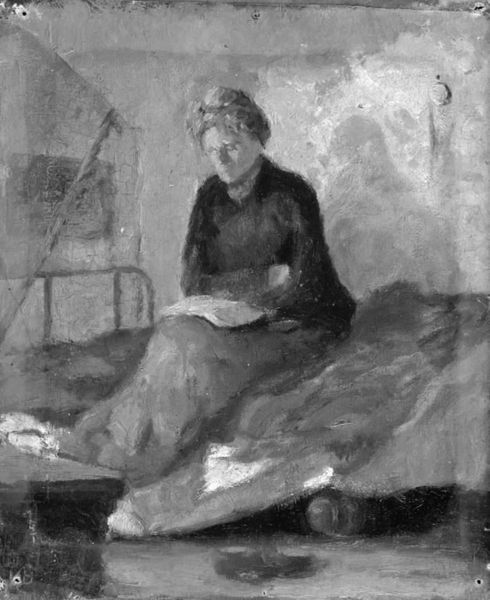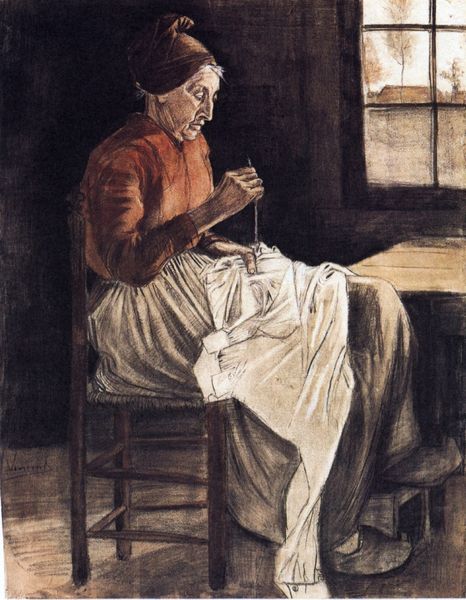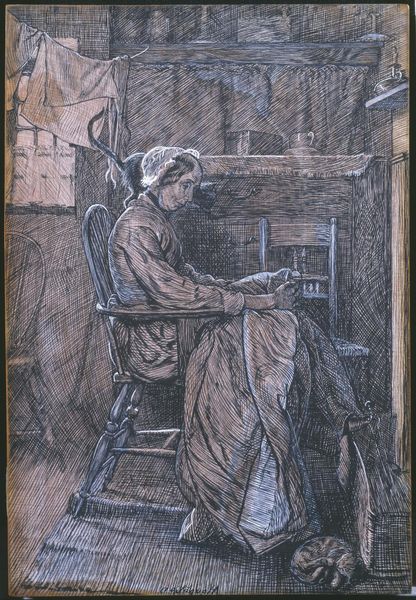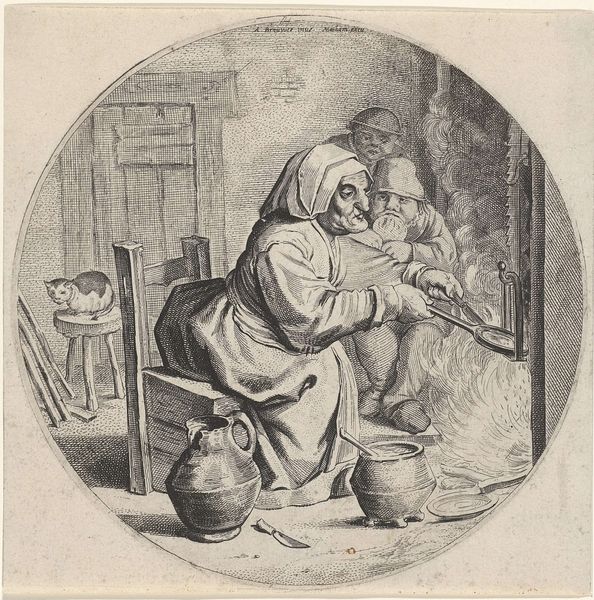
oil-paint
portrait
oil-paint
oil painting
genre-painting
portrait art
fine art portrait
realism
Copyright: Public domain
Curator: Look at "Old Spinner" by George Harvey. The way light glances off the spinner's worn hands draws me right in. What’s your initial reaction to the work? Editor: Well, it definitely feels unfinished, almost like a study. You can see the underdrawing, particularly on the spinning wheel itself. It’s a glimpse into the making. The focus seems entirely on the figure of the woman, highlighting a real human toil. Curator: I find it interesting how this depiction of labor, while not overtly critical, intersects with Victorian ideals of domesticity and industry. The artist elevates a mundane, perhaps even arduous task. He asks us to view the aging woman with dignity. Editor: Precisely, and what of the labor involved in painting such a piece? Look at the brushwork – it is very loose and expressive. It stands in stark contrast to the realistic portrayal of the subject. And while "art" in its conventional sense seeks escape from it, we also learn from the material qualities that went into depicting such realities. Curator: Yes, and how art institutions, especially academies, defined whose work was 'worthy' reflects a deeper societal bias. Was there consideration given to working-class subjects such as the spinner as suitable for representation? Harvey’s decision says something about his perspective and that of his anticipated audience. Editor: Certainly, think about how raw materials such as oils and pigments were sourced. This, the very act of preparing them, and applying them on the canvas becomes a story in itself - all these acts give voice to silent industry in turn reflecting both craft and value in society’s eyes which had to exist before it found exhibition spaces such as these where the painter meets patronage through such scenes on canvases brought vividly true during life at work as depicted through works created by the artist themselves within his or her workshop using these very devices! Curator: Exactly. It is about making these stories resonate. This artwork lets us engage with the intersection of gender, work, and social status as it considers our present relationship regarding access to materials involved. Editor: That's it: access is not only crucial now to appreciating works, it helps shape cultural perceptions too. Curator: Yes. So well articulated through all his choices with paint from brush strokes all down how and when that light was set right! Thanks.
Comments
No comments
Be the first to comment and join the conversation on the ultimate creative platform.
